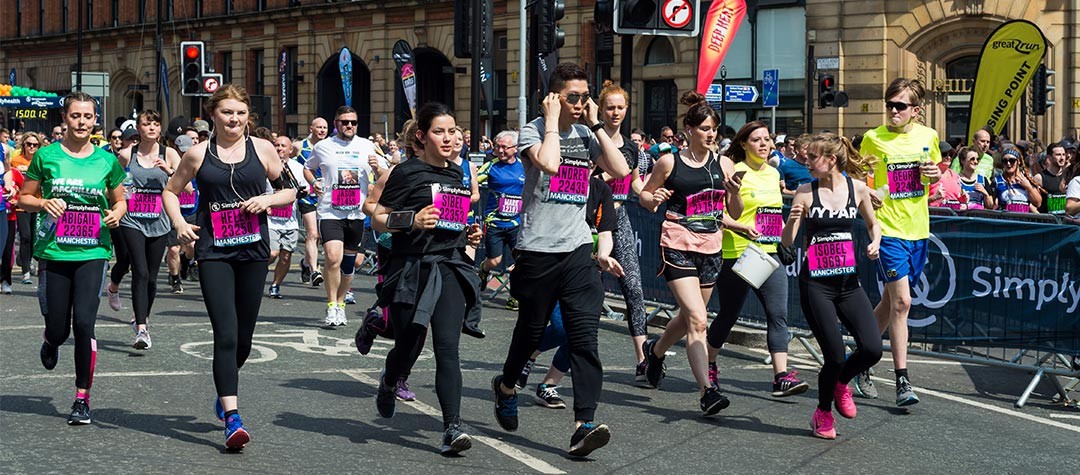Are you looking to improve your 10k time? These tips to increase your race pace will have you clocking up those PBs.
If you are targeting the 10k and wondering how best to approach your race in order to get the fastest time possible, then wonder no more. The distance itself is a combination of speed and strength. You are not going to need the strength you would have to have for a marathon, yet you need your legs to be used to running a bit quicker than your marathon pace, so how do you achieve that?
1. Run some shorter distances
Depending on what background you have training wise, it would be advisable to run some shorter distances in the build-up to really get the legs running fast because the more you do this, the easier the pace will feel during the race. Splitting the race into two mile (3.2km) segments would be a good way to approach it, with the first two miles (3.2km) relaxed and steady, picking up slightly in the third (4.8km) and fourth (6.4km) miles, and during the last two (3.2km) miles either maintaining the pace or picking up again to finish even quicker. That will cover the race plan, but what sort of training do you need to be doing?
2. Practise for a 10km by running a local 5k
A good way to practice your 10km race pace, and also a good training session is to do one of your local 5k events and once you have finished, run another one. Setting off for the first 3 miles (5km) at 10k race pace will feel very easy, but once you finish give yourself two to five minutes recovery before starting again on the second 3 miles (5km). This will enable you to get used to the distance and also have people to run with during the first 5km.
You could even have the target of catching the last place person in the local 5k race before the end of your second lap. As you progress you can shorten the recovery between the two 5k runs to a minimum of one minute. This is good training and is pretty much 2 x tempo runs . That would be one of your longer race distance training sessions.
3. Run quicker than your 10k race pace
Another point you will need to work on is something quicker than race pace. Mile reps are a good way to work on this energy system. Something like 4-6 x 1 mile with two minutes recovery between the mile reps. Aim to start off at your predicted race pace for the 10k and try to get quicker as you work through the mile reps. This will help get the legs used to running quicker than race pace when they are tired, which is what you want to do in the actual race!
4. Run at your 10k race pace
The trick to the 10k is to make sure that you have done some running at the pace you want to race. There is nothing worse than starting a race trying to run a certain pace and it feels too fast from the start. Doing some strides before the race can help with this, but if you haven't done the background training then it is going to be a problem.
5. Train on an athletics track
Another good session for 10km training is to actually use an athletics track . From your 3-mile (5k) time, work out how fast that is per 400m (one lap of the track). Once you have this then you can attempt a session on the track involving repetition 400m. If you can run 10 x 400m with one-minute recovery at your 3-mile (5km) race pace, then you are doing well. This is obviously going to be a lot faster than the pace you need to run for 10k, but it will really help your legs to get used to running faster. This will mean you shouldn't start the 10k and think 'this is too fast!' Good luck with the training, and remember – get those legs moving!
Picture credit: Anna Mente / Shutterstock.com














